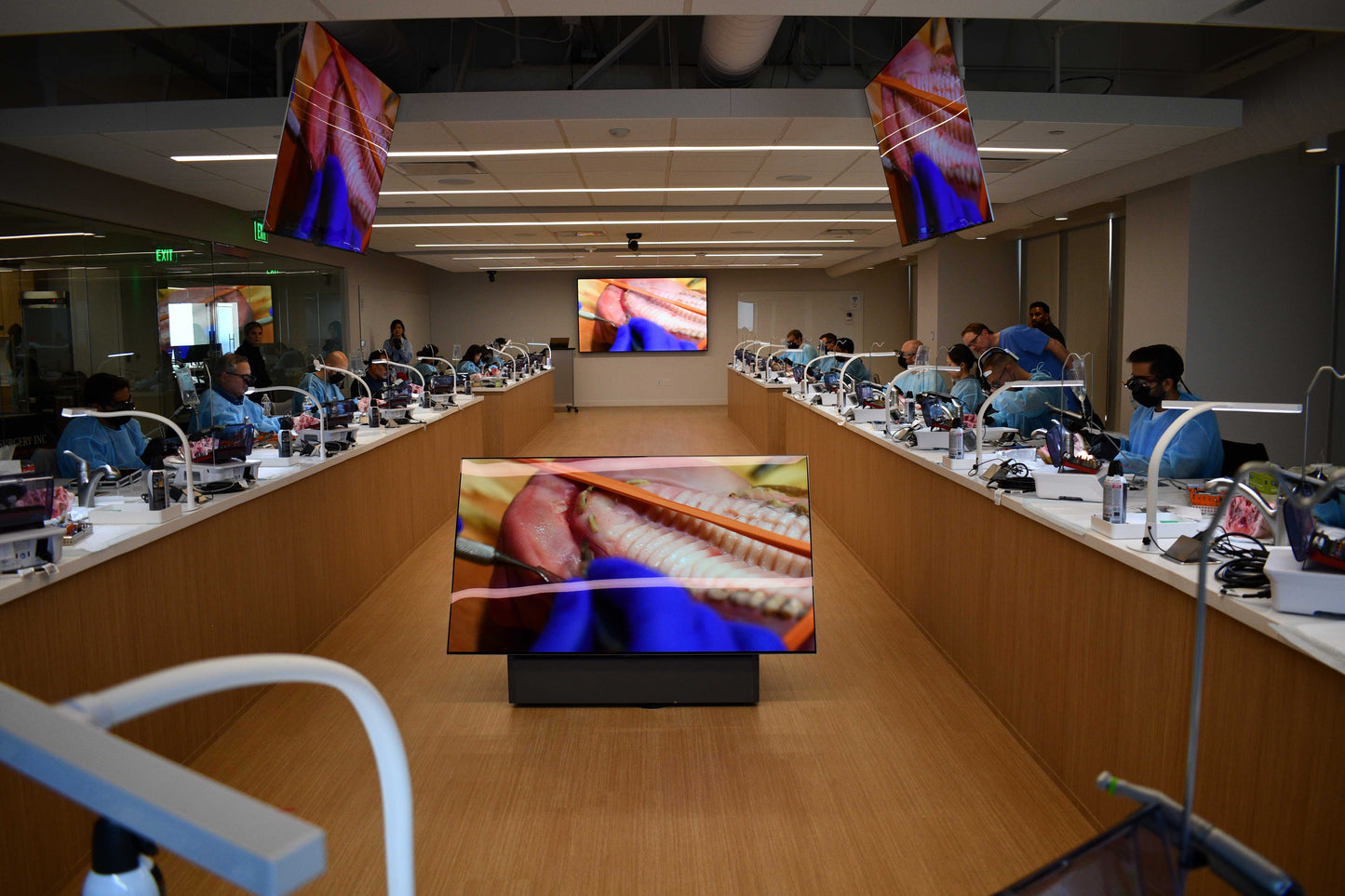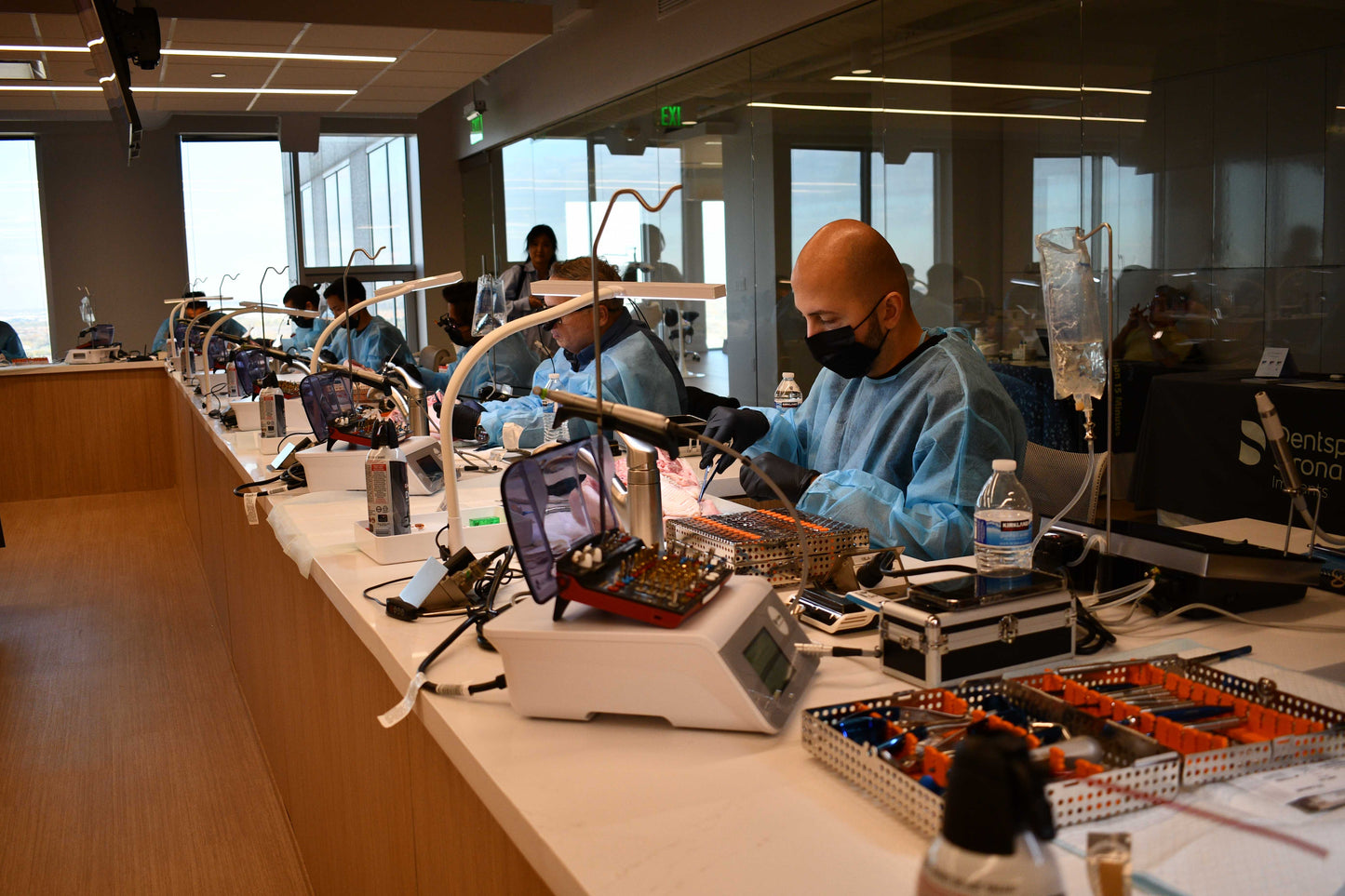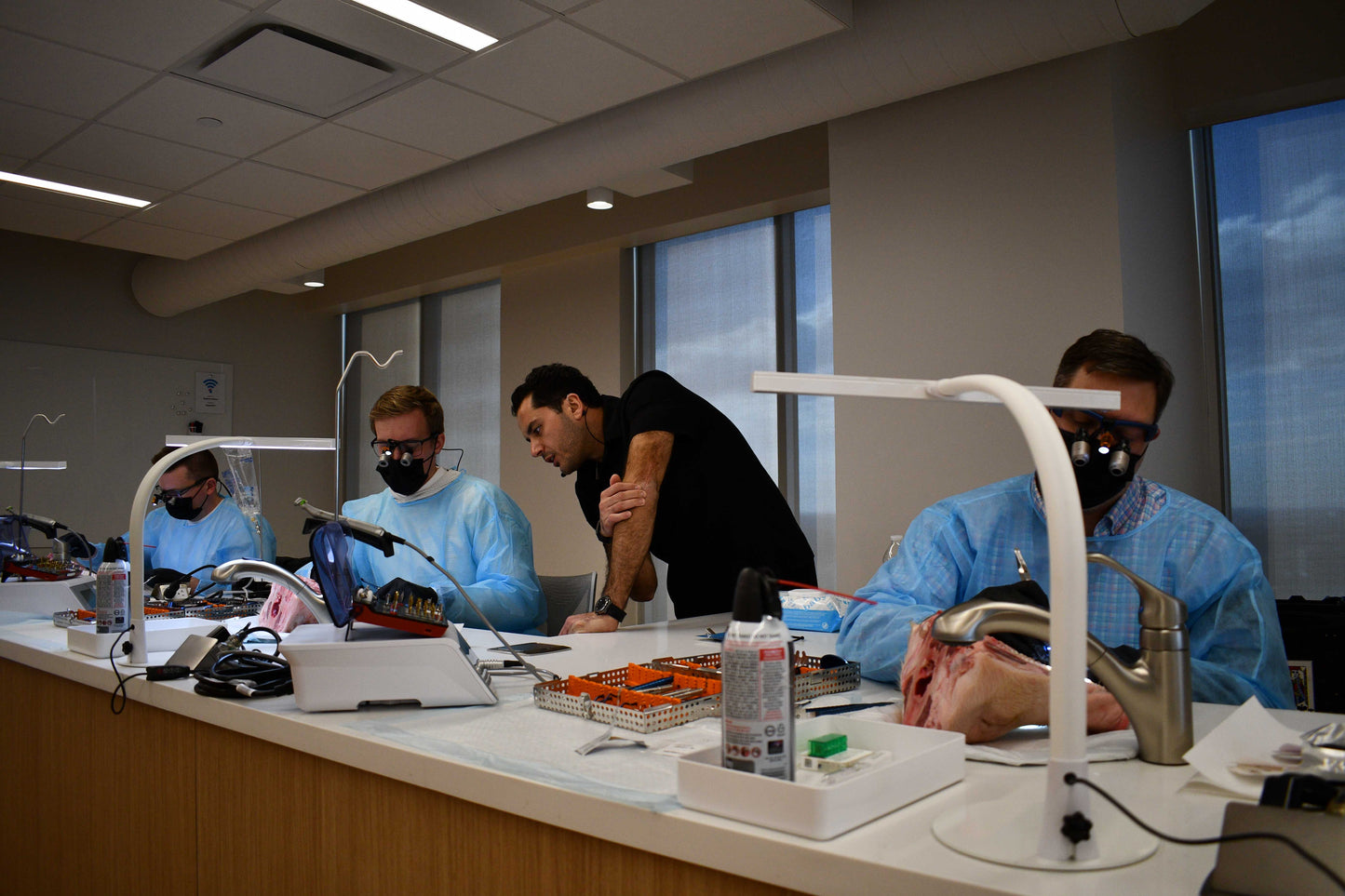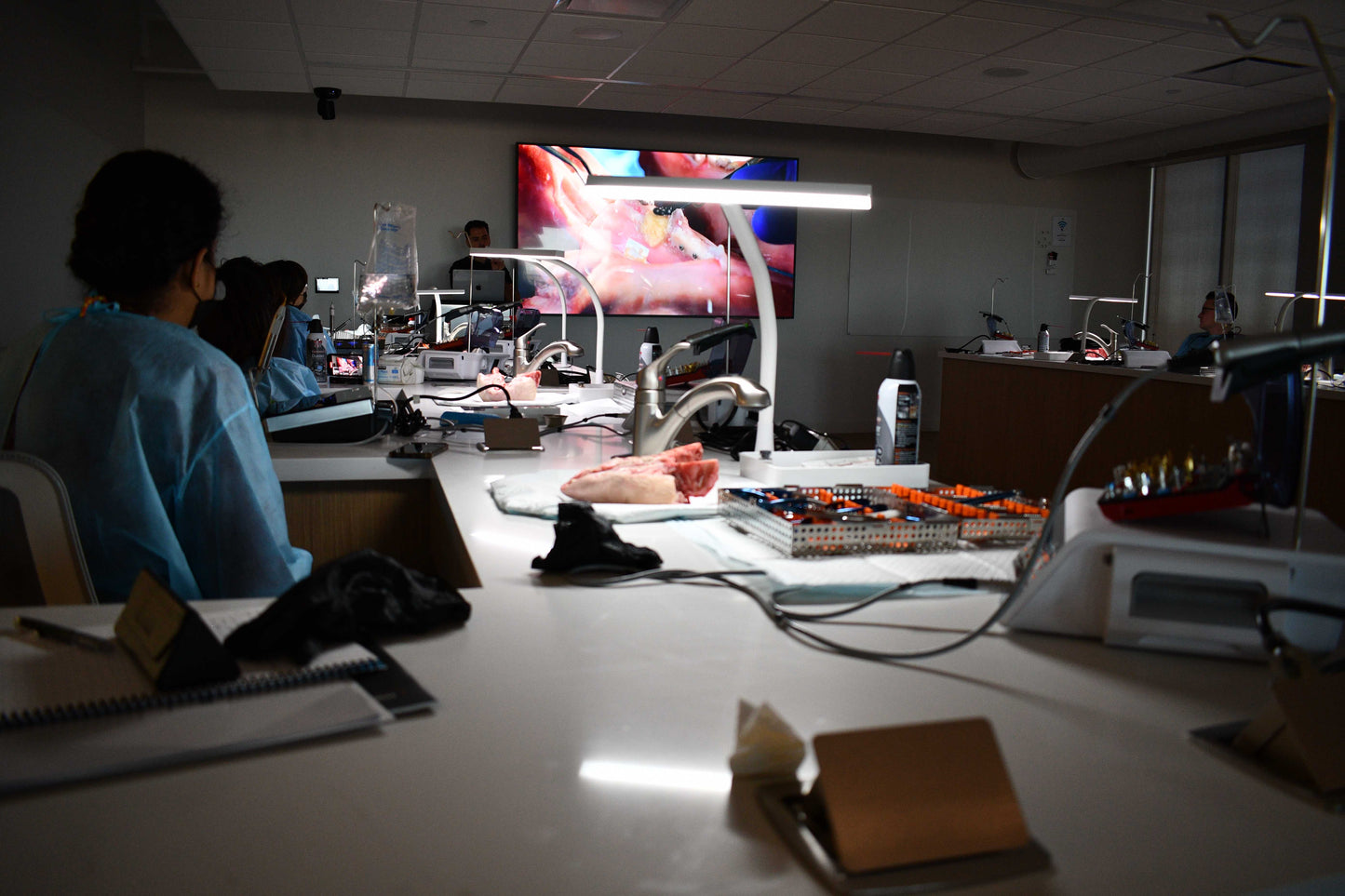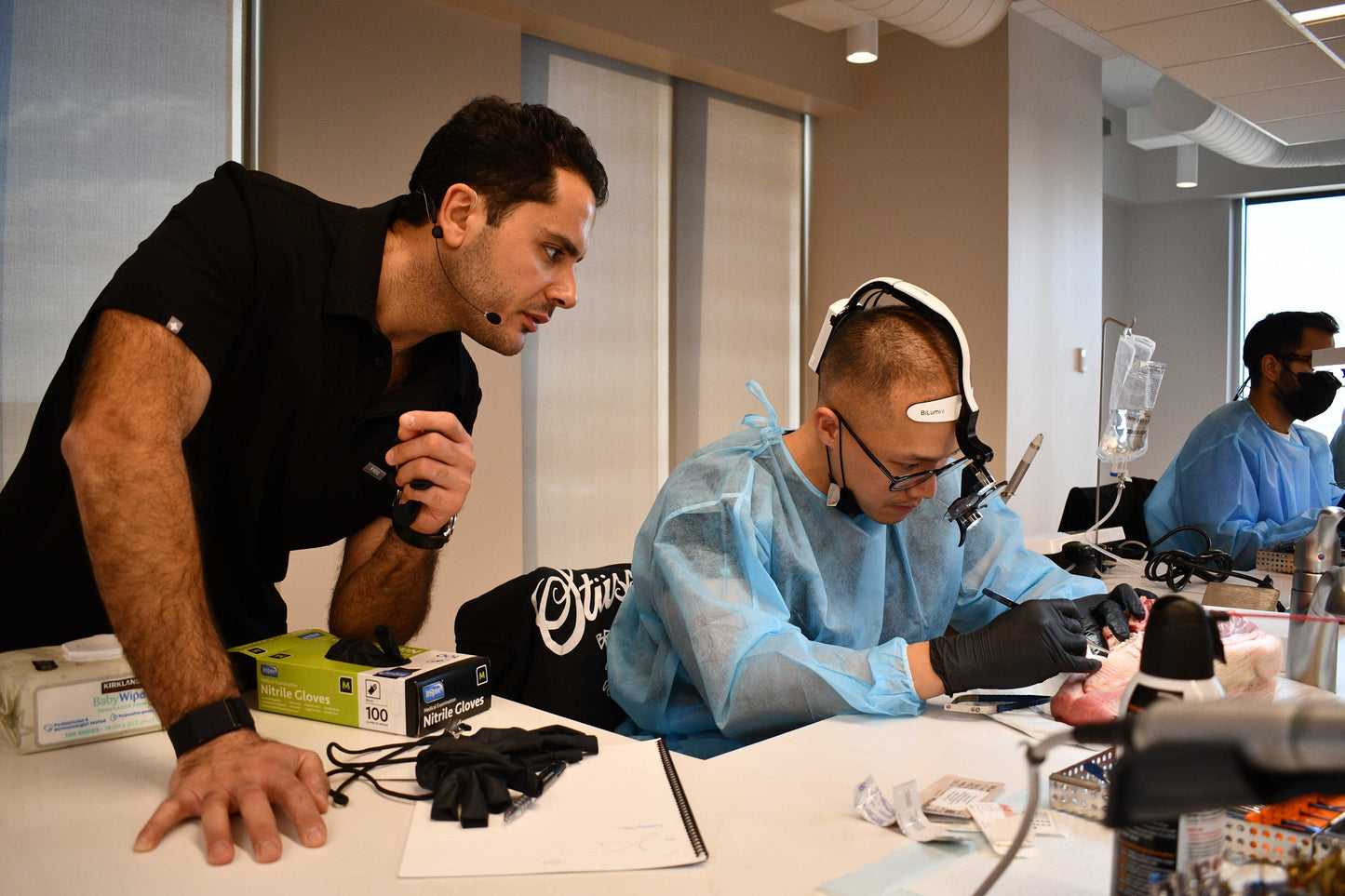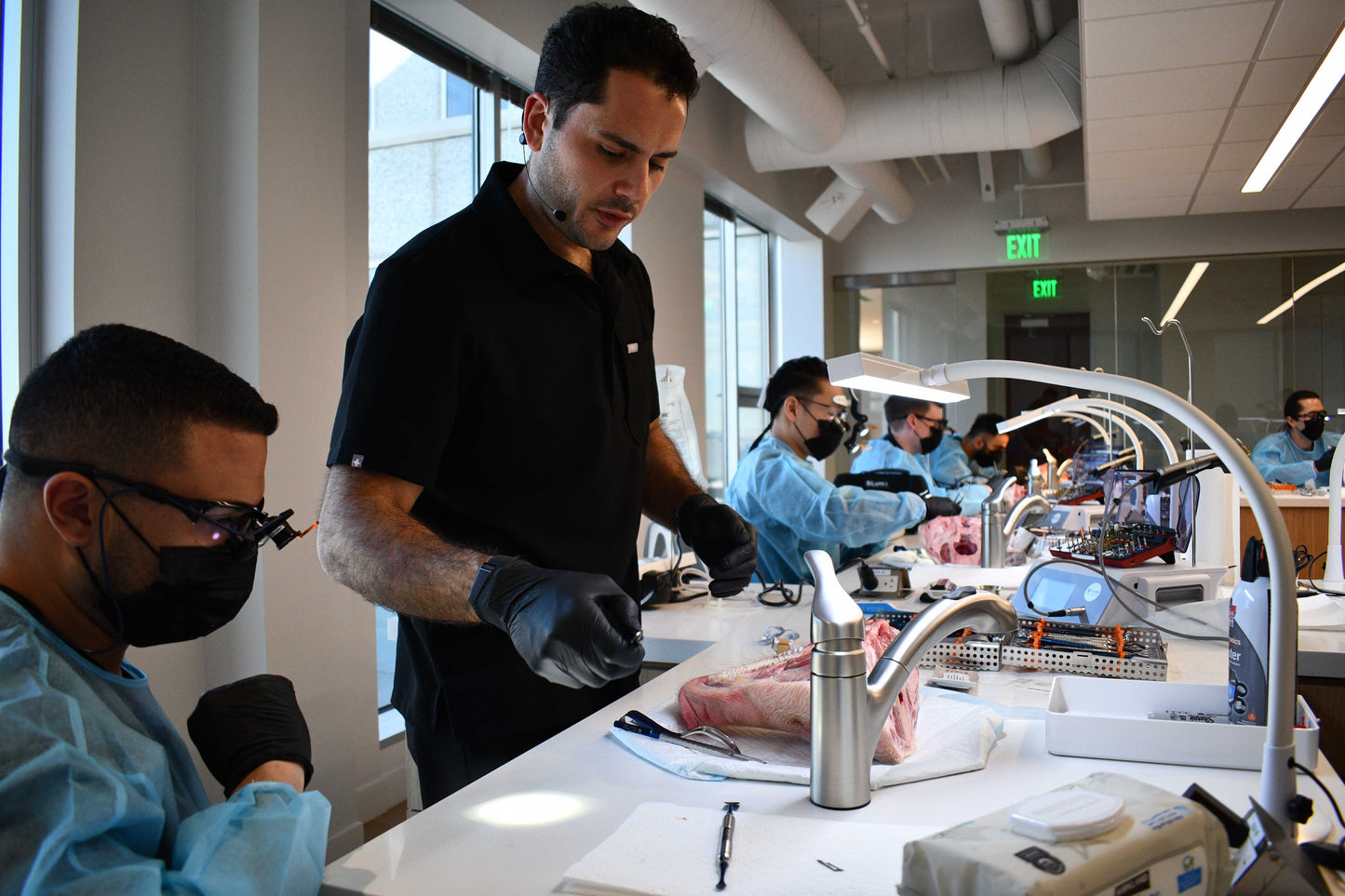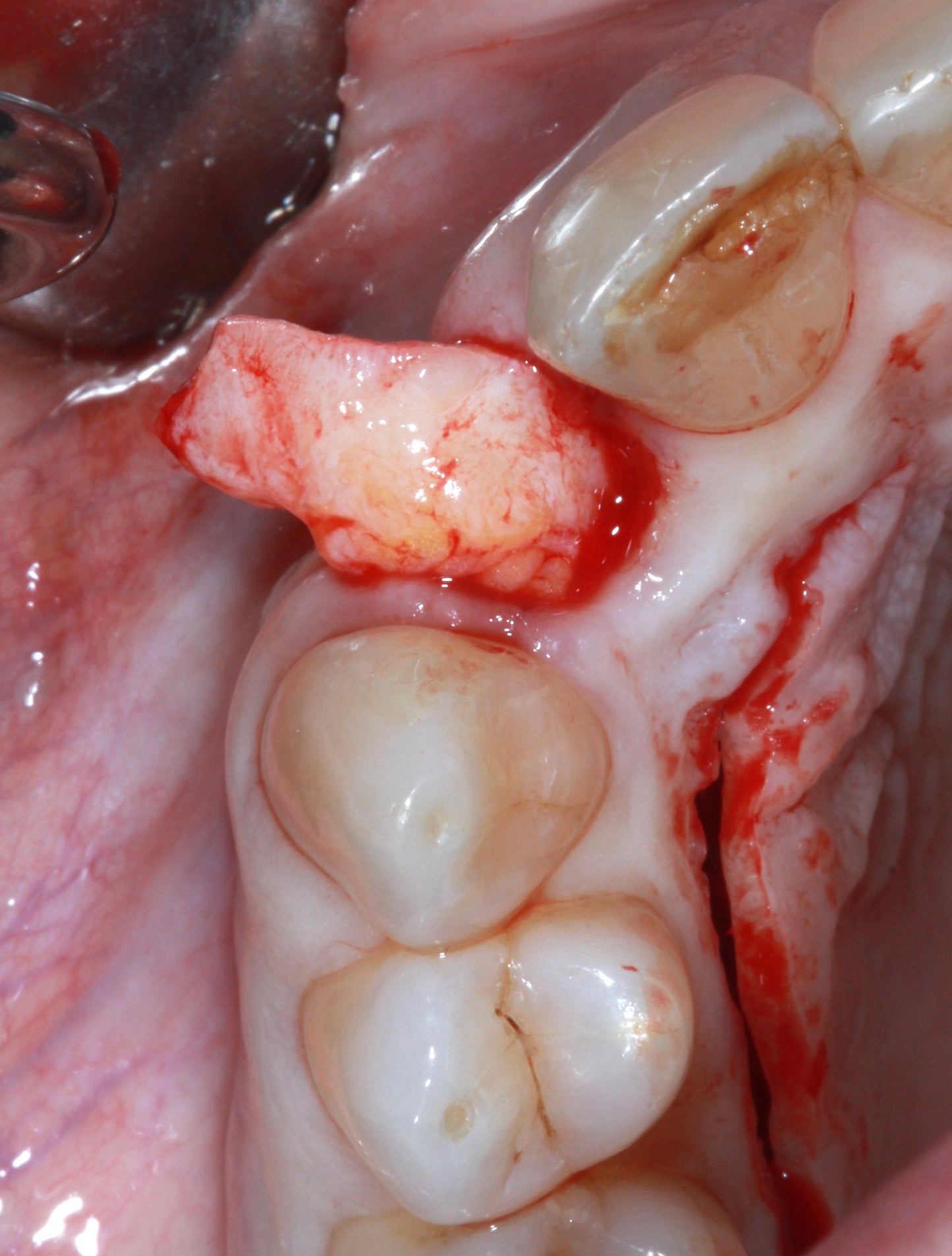Full Course Details
Topics we'll cover
Anatomy and terminology
Literature review
Defect classification
Timeline of grafting
Armamentarium
Suturing
Harvesting techniques: Free gingival graft, Connective tissue graft, Tuberosity harvest, Retromolar and edentulous ridge harvest
Step by step techniques: Apically positioned flap, Vestibuloplasty, Lingually positioned flap, Rotated palatal pedicle, Roll flap and modifications, VISTA/tunnel techniques, Vertical volume augmentation
Clinical case review
Post-op management
Complications
Hands-on training
Microsurgical suturing exercises
Harvest of autogenous tissue
Apically positioned flaps
Free gingival graft
Immediate implant + tunnel CTG
Socket grafting with palatal pedicle
Tunneling techniques
What you can expect
Vestibuloplasty + CTG augmentation
It's always tricky to manage the soft tissues in the anterior maxilla post bone augmentation. Here the patient presented with a deficient vestibule and lack of attached gingiva post ridge GBR. We managed the vestibular deficiency using a vestibuloplasty + connective tissue graft. But then we also added tuberosity CTGs around the healing abutments for volume augmentation.
Photos show final healing with improved soft tissue quality and quantity.
Apically positioned flap + CTG augmentation
This patient presented for second stage post ridge splitting in the maxillary anterior. We utilized an apically positioned flap to position KG to the buccal aspect. We also add a palatal connective tissue graft (CTG) to augment the buccal soft tissue volume. This was then followed by provisionalization. Photos show the final soft tissue profile with tissue abundance.
Implant recession coverage with FGG
This patient presents with recession and exposure of both the implant and abutment. This was also accompanied with a lack of KG and vestibular depth. Case was managed with a vestibuloplasty and free gingival graft. This was also accompanied by plasty of the implant and abutment surface. Photos show final healing at 4 months. First premolar had also been replaced with an implant.
Tunnel + CTG for volume augmentation
This patient presented with a provisional on implant #9. Tissues had some recession along with a large horizontal volume deficiency. Case was managed with a tunnel approach using microsurgical blades and connective tissue graft. This was combined with contour management of the provisional. Photos show final soft tissues and implant crown in place.
The biggest advantage of this program is how each topic and technique are covered in a clear step-by-step approach. This makes this course a valuable resource to clinicians of varying levels of expertise in the field.
Soft Tissue Immersion
Share
